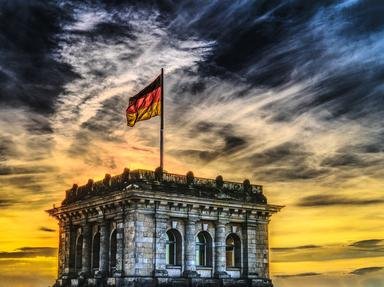Quiz Answer Key and Fun Facts
1. We arrive in Munich with plans to return from Berlin, the site of my nephew's wedding. We waste no time in heading southeast toward Austria, bypassing Munich for the time being, and come upon an alpine lake, the Chiemsee, near the town of Prien. On this lake are two principal islands, one the "Fraueninsel", or woman's island, and the other the "Herreninsel", or men's island. We take a boat to the men's island and find a huge castle built on the island by mad King Ludwig of Bavaria. It looks familiar, and no wonder. It was built to be a replica of which famous European palace?
2. We head on to Salzburg in Austria, and gorge ourselves on white asparagus, which arrives with considerable celebration in early May. We go back to Munich on the light-speed autobahn, and settle in to our hotel. Enjoying a beer at the Marienplatz, the most prominent square in Munich, a crowd begins to form in front of the medieval city hall, or Rathaus, just before eleven. What happens at eleven?
3. Driving north, we are alongside the river Neckar, and come to a university town with a castle overlooking the river. The university was founded in 1386 making it one of Europe's oldest. Several attractive bridges span the river. What is the name of this town?
4. Next we come to a medieval walled town known in olden times for being a trading center and even to the present day for its "Christkindlesmarkt", the home of the engraver and painter Albrecht Durer, and in recent history, the site of massive party rallies during Nazi rule. What town are we in?
5. Through the famous Black Forest, we reminisce of our childhood days, when we were entertained by tales from a pair of brothers who wrote children's stories in settings of forests and magic. What is the name of these brothers?
6. As we travel through the Moselle and Rhine valleys, we see many vineyards, planted with predominantly white grapes. What is by far the most popular grape for making wine in Germany?
7. In which city along the Rhine river do we find Germany's most famous gothic structure, begun in 1248, remained unfinished between 1520 and 1842, and was finally completed in 1880 after the original building plans were discovered?
8. We head to the premier city in Germany: Berlin. This city known as the forefront of the cold war, is also known for many first rate museums. One of my favorites is the Pergamon museum which has a series of reconstructions of ancient towns. It is located on "Museum Island" which also houses the Bode museum, the Neues (new) museum, the Altes (old) museum and the old National Gallery. These are located on tributaries of Berlin's river. Which of the following am I talking about?
9. We drive to Potsdam on the outskirts of Berlin, and are in the midst of several palaces. We see huge chestnut trees and pagodas, fountains, and a large orangery for cultivation of plants. We tour a palace where we are required to wear wool-soled slippers to protect the parquet floors and see a ballroom with the arched ceiling made of seashells and jewels. We walk to another palace with terraced vineyards alongside the steps leading to the palace. The vines are actually in glass cases to protect them in the northern German winter. This pleasure palace of Frederick the Great is named what?
10. After attending the wedding of my nephew in the outskirts of Berlin, we have one more sightseeing session in town before flying back. Surprisingly, we find very little remaining of the Berlin Wall, and only one guard tower. Although it seems like yesterday, the wall has been down for a while. In what years were the Berlin Wall built and demolished, respectively?
Source: Author
jstagamtome
This quiz was reviewed by FunTrivia editor
minch before going online.
Any errors found in FunTrivia content are routinely corrected through our feedback system.

